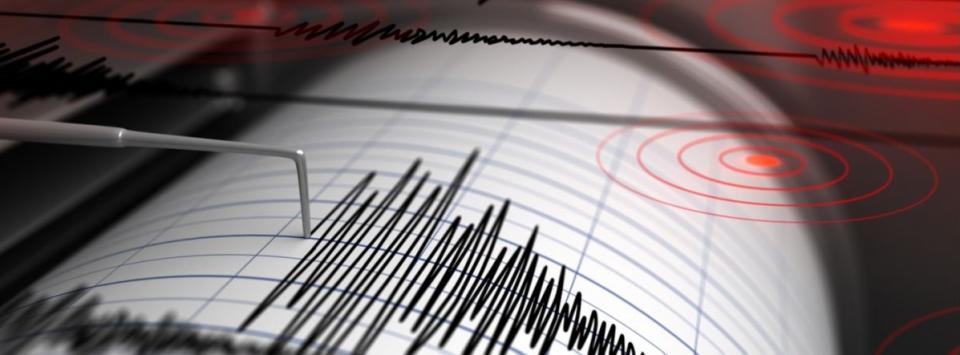Earthquake
Earthquakes strike suddenly, violently and without warning at any time of the year and at any time of the day or night. Smaller earthquakes often follow the main shock.
An earthquake is caused by the breaking and shifting of rock beneath the earth’s surface. Ground shaking from earthquakes can collapse buildings, bridges, disrupt gas, electric, phone service, and sometimes, trigger landslides, avalanches, flash floods, fires and huge destructive ocean waves (tsunamis).
Most earthquake-related injuries result from collapsing walls, flying glass and falling objects.
Prepare
Before an earthquake:
- Secure your space
- Create a plan
- Prepare disaster kits
- Strengthen your home
Don’t Let Earthquakes Catch You Off Guard — Sign up for Free Earthquake Warnings
Earthquake Warning California is managed by the California Governor’s Office of Emergency Services (Cal OES) and is the country’s first publicly available, statewide warning system. The warning system is designed to give California residents a few moments warning to take cover before shaking occurs.
To receive earthquake warnings, Californians can download the free MyShake App, which is available in the Apple App Store and Google Play store.
To learn more about Earthquake Warning California or for industry/business resources to help spread the word with your employees, customers, and the public, visit earthquake.ca.gov
Survive
During an earthquake:
- Drop, cover, and hold on
- Check for injuries and damage
Recover
After an earthquake or tsunami:
- Follow your plan
Specific situations during Drop, Cover and Hold on
Persons with Disabilities…
- See Earthquake Country.org/disability for recommendations for people who use wheelchairs, walkers, or are unable to drop to the ground and get up again without assistance.
If indoors…
- Drop, Cover and Hold On.
- Avoid exterior walls, windows, hanging objects, mirrors, tall furniture, large appliances and kitchen cabinets with heavy objects or glass. However, do not try to move more than 5-7 feet before getting on the ground.
- Do not go outside during shaking! The area near the exterior walls of a building is the most dangerous place to be.
- Windows, facades and architectural details are often the first parts of the building to break away.
- If seated and unable to drop to the floor: bend forward, Cover your head with your arms, and Hold On to your neck with both hands.
If in bed…
- Do not get out of bed.
- Lie face down to protect vital organs, and Cover your head and neck with a pillow, keeping your arms as close to your head as possible, while you Hold On to your head and neck with both hands until shaking stops.
- You are less likely to be injured by fallen and broken objects by staying where you are.
If in a high-rise…
- Drop, Cover and Hold On.
- Avoid windows and other hazards.
- Do not use elevators.
- Do not be surprised if sprinkler systems or fire alarms activate.
If in a classroom…
- Drop, Cover, and Hold On.
- Laboratories or other settings may require special considerations to ensure safety.
- Students should also be taught what to do at home or other locations.
If in a store…
- Drop, Cover, and Hold On.
- Getting next to a shopping cart, beneath clothing racks, or within the first level of warehouse racks may provide extra protection.
- For more details, download a simple PDF fact sheet about Earthquake Safety in Stores.
If outdoors…
- Move to a clear area if you can safely do so.
- Avoid power lines, trees, signs, buildings, vehicles, and other hazards. Then Drop, Cover, and Hold On. This protects you from any objects that may be thrown from the side, even if nothing is directly above you.
Immediately after the earthquake
- Try to remain calm; panic can cause as many casualties as the emergency situation itself.
- Aftershocks may occur for several days. STAY OUT of damaged areas unless requested to help!
- Don’t drive unless necessary; keep streets clear for emergency vehicles.
- Report broken gas or power lines, water mains, etc., immediately.
- Keep listening to radio and/or television for instructions. Use telephone only for assistance.
If power is out…
Unplug all electrical equipment, stereo gear, TV sets, computers, audio-visuals and turn off light switches unless needed. When power returns, it may be in a surge and blow out light bulbs and other equipment.



